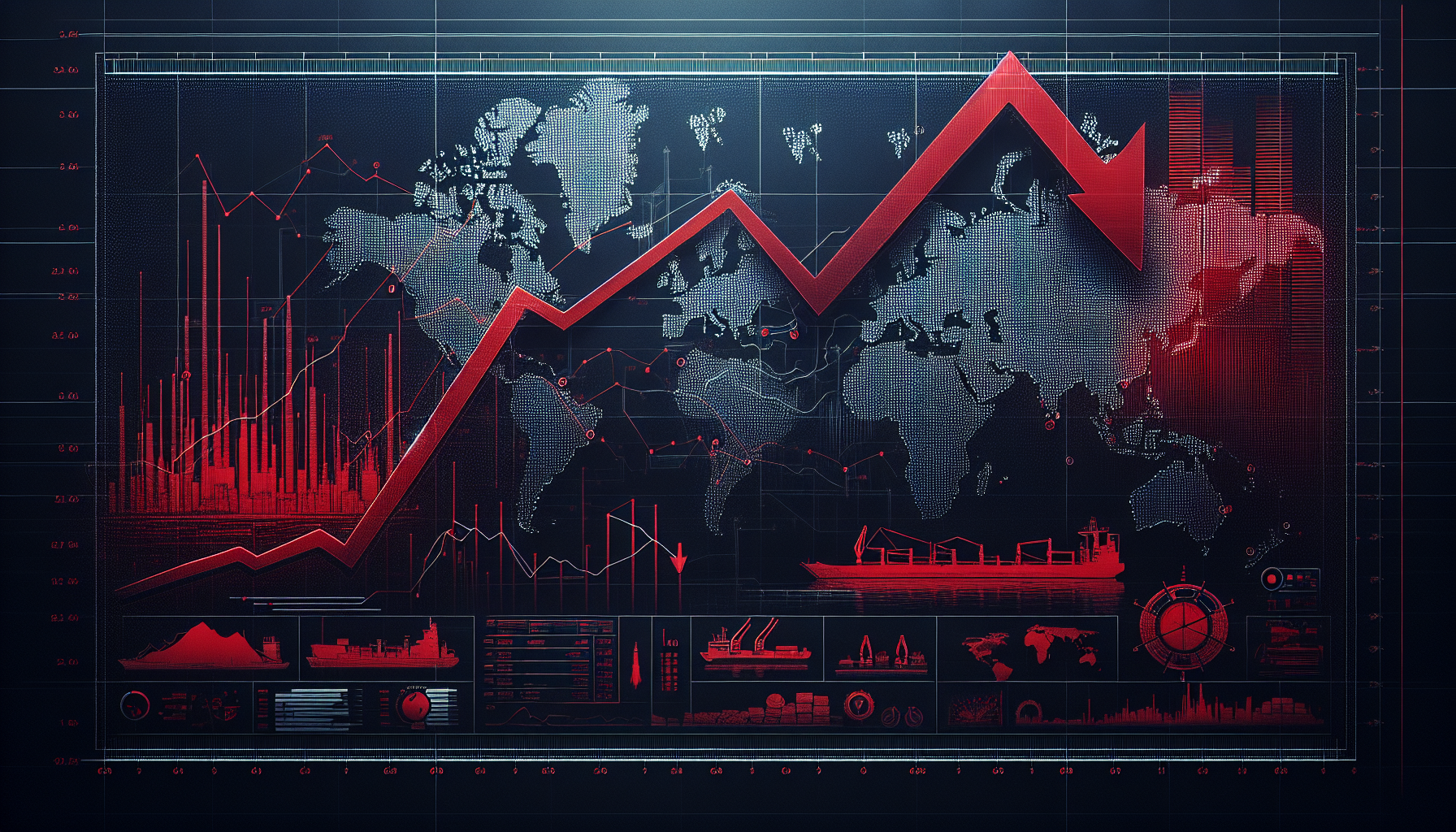The S&P 500 closed the first quarter of 2025 under pressure as U.S. trade policy rattled global investors. The index declined by 4.6%, while the Nasdaq dropped 10.5%, its worst quarter since 2022. A wave of new tariffs announced by the Trump administration has heightened fears of a global trade conflict.
Goldman Sachs raises to 35% its odds of a recession in the next year, from 20% previously, due to the broad use of tariffs from the Trump administration
They last put the odds at this level during the rapid monetary tightening of 2022 and the SVB related stress of 2023 pic.twitter.com/UY5Yx2Kxsa
— Nick Timiraos (@NickTimiraos) March 30, 2025
Markets are reacting not just to the presence of tariffs but also to their sweeping scope.
OOPS! Goldman Sachs has cut its S&P 500 forecast again, citing concerns about slowing growth & rising inflation risks following higher tariff rate expectations. Now expects the index to drop to 5,300 over next 3mths, before recovering to around 5,700 in 9mths and 5,900 in a year. pic.twitter.com/BCWdSbc10k
— Holger Zschaepitz (@Schuldensuehner) March 31, 2025
Aluminum, steel, and auto tariffs are already in place, and the next round is expected to hit all trading partners. The potential impact on inflation and supply chains has triggered concerns over corporate margins and consumer demand.
The “Magnificent Seven” tech stocks, long seen as market anchors, led the Q1 downturn. Tesla, Inc. fell 36%, and Apple Inc.
The S&P 500 is now down 10.7% from its peak on February 19, the biggest drawdown since 2022. This is the 30th correction >5% off of a high since the March 2009 low. They all seemed like the end of the world at the time. $SPX
Video: https://t.co/liXYzJOUl5 pic.twitter.com/djkunLBJe6
— Charlie Bilello (@charliebilello) March 31, 2025
dropped nearly 20%, dragging the Nasdaq into correction territory. Pressure stems from tariff-related supply disruptions, lofty valuations, and rising regulatory scrutiny. Energy was Q1’s top performer, rising 9.3% on the back of geopolitical risk and supply concerns.
The S&P 500 fell 1.97% on Friday, the 13th daily decline in 2025 w/ a loss above 1%. Last year at this point we had only 3 large down days which was abnormally low. The average year since 1928 has 29 large declines. This is the price of admission.
Video: https://t.co/bp8qymBdHZ pic.twitter.com/TaMNla7TUp
— Charlie Bilello (@charliebilello) March 30, 2025
Consumer staples also gained traction as investors sought safety in defensives. The rotation hints at a shift in leadership, with value and cyclicals regaining ground after years of tech outperformance.
S&P 500 pressured by new tariffs
Goldman Sachs raised its U.S. recession odds to 35%, citing slowing growth and tariff-driven inflation risks. The investment bank also cut its S&P 500 year-end target to 5,700. This week’s data releases, along with Fed commentary, will be critical for gauging whether rate cuts are back on the table.
With the CBOE Volatility Index rising to 22.28, volatility appears entrenched. Traders should focus on quality names with domestic revenue, strong balance sheets, and limited tariff exposure. Selective exposure to energy, staples, and healthcare may offer relative strength.
In this environment, nimbleness and selectivity may outperform index-level strategies as markets contend with evolving trade and economic pressures. Wall Street strategists are lowering their stock market forecasts as concerns over President Trump’s tariffs materialize. Both Yardeni Research and Goldman Sachs have revised their year-end targets for the S&P 500 downward, reflecting a more pessimistic economic outlook.
Goldman Sachs has updated its three-month target for the S&P 500 to 5,300. The firm’s economists have elevated the anticipated tariff rate to 15%, above their prior forecast of 10%, and raised the probability of a recession within the next 12 months to 35% from 20%. Yardeni Research president Ed Yardeni now sees a 45% chance of the economy tipping into recession and the S&P 500 entering a bear market, which would mark a 20% decline from its recent all-time high to just over 4,900.
This implies at least another 12% downside from current levels. Despite the downturn, strategists advise close monitoring of economic indicators and market conditions to navigate the challenging terrain ahead. The S&P 500 has struggled in the first quarter of 2025, entering Monday down about 5% year to date at 5,580.94.

